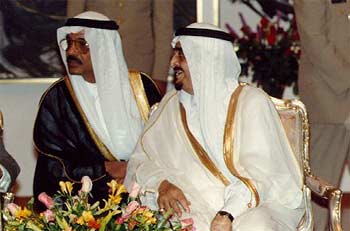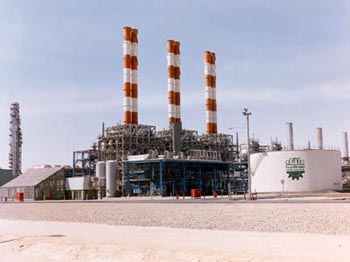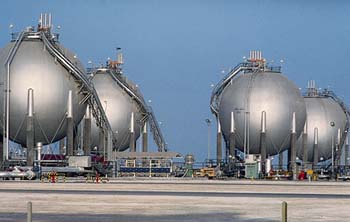Untitled Document
According to a new book exclusively obtained by the Huffington Post, Saudi Arabia
has crafted a plan to protect itself from a possible invasion or internal attack.
It includes the use of a series of explosives, including radioactive “dirty
bombs,” that would cripple Saudi Arabian oil production and distribution
systems for decades.
Bestselling author Gerald Posner lays out this “doomsday scenario”
in his forthcoming “Secrets of the Kingdom: The Inside Story of the Saudi-US
Connection” (Random House).

According to the book, which will be released to the public on May 17, based
on National Security Agency electronic intercepts, the Saudi Arabian government
has in place a nationwide, self-destruction explosive system composed of conventional
explosives and dirty bombs strategically placed at the Kingdom’s key oil
ports, pipelines, pumping stations, storage tanks, offshore platforms, and backup
facilities. If activated, the bombs would destroy the infrastructure of the
world’s largest oil supplier, and leave the country a contaminated nuclear
wasteland ensuring that the Kingdom’s oil would be unusable to anyone.
The NSA file is dubbed internally Petro SE, for petroleum scorched earth.
To make certain that the damaged facilities cannot be rebuilt, the Saudis have
deployed crude Radioactive Dispersal Devices (RDDs) throughout the Kingdom.
Built covertly over several years, these dirty bombs are in place at -- among
other locations -- all eight of the Kingdom’s refineries, sections of
the world’s largest oil field at Ghawar, and at three of the ten indispensable
processing towers at the largest-ever processing complex at Abqaiq.

According to the NSA intercepts, Petro SE was devised by the Saudis because
of their overriding fear that if an internal revolt or external attack threatened
the survival of the House of Saud, the U.S. and other Western powers might abandon
them as the Shah of Iran was abandoned in 1979. Only by having in place a system
that threatened to create crippling oil price increases, political instability
and economic recessions did the royal family believe it could coerce Western
military powers to keep them in power.
Some American and Israeli officials privately believe that Saudi officials
have been aware for more than a decade that their conversations were monitored,
and that as a result they greatly exaggerated Petro SE in order to blackmail
the West into protecting them at all costs. For the Saudis, the threat to the
U.S. and other powers works so long as those countries cannot be certain of
the extent of the “self-destruction grid.”
Posner chronicles an over twenty-five year multinational intelligence gathering
operation that exposes Petro SE -- the House of Saud’s “nuclear”
insurance policy to escape the fate of Saddam Hussein and the Shah of Iran.

“Although the NSA is not certain of the radioactive elements finally
used by the Saudis, they believe Petro SE successfully developed dozens of radiation
dispersal devices,” Posner writes.
“These RDDs that the Saudis have integrated into their oil infrastructure
are far less lethal than traditional nuclear weapons. The risk is not mass fatal
casualties as with a nuclear explosive, but rather increased cancer rates over
many years. In the short run, the psychological fear that an area is contaminated
by radiation might be so great as to make it commercially unproductive.”
Posner is an award-winning author of nine books, including "Why America
Slept: The Failure to Prevent 9/11" and "Case Closed: Lee Harvey Oswald
and the Assassination of JFK", and has written for such publications as
The New York Times, The New Yorker, Time, Newsweek, The Wall Street Journal,
and U.S. News & World Report.

